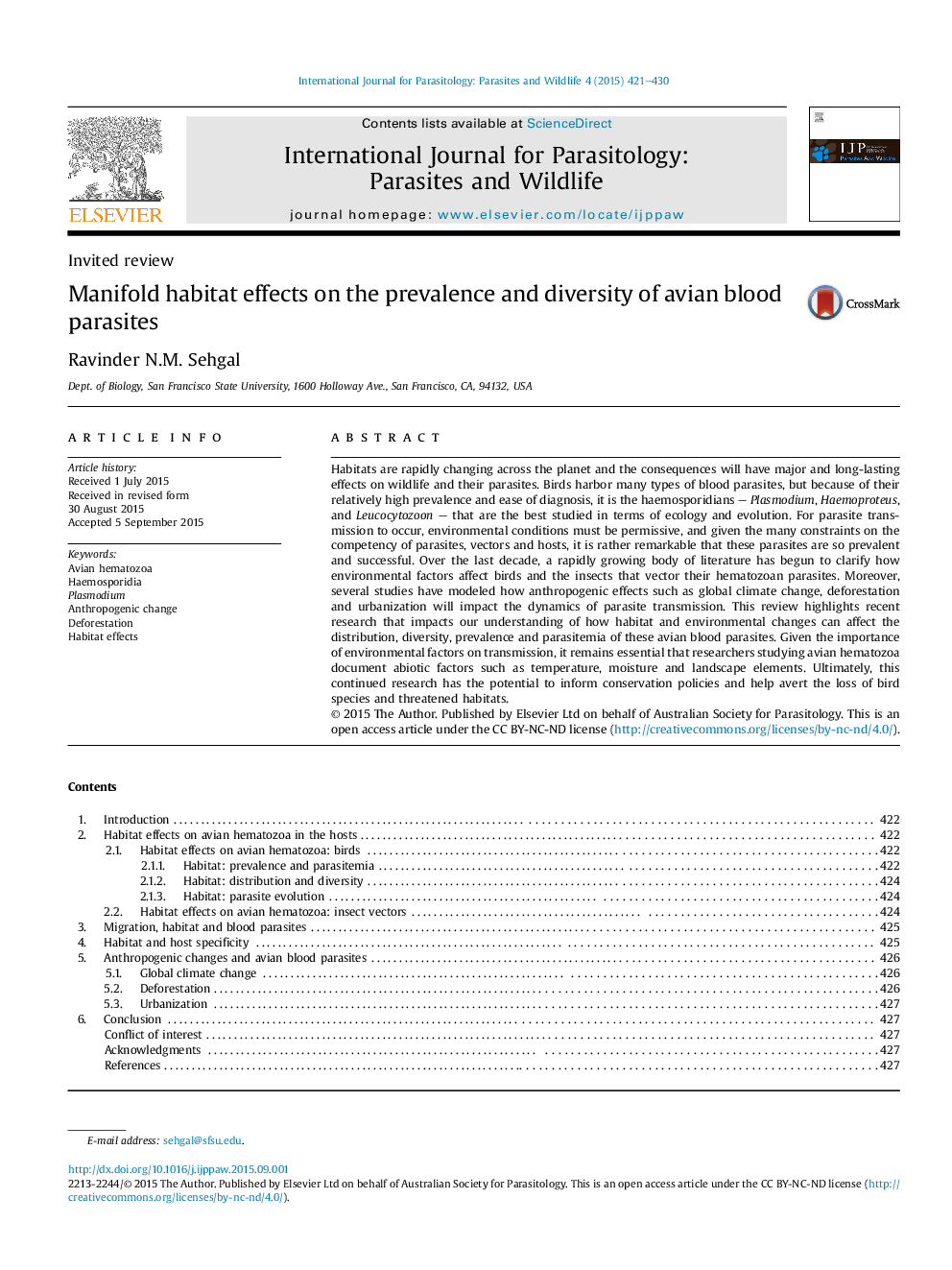| کد مقاله | کد نشریه | سال انتشار | مقاله انگلیسی | نسخه تمام متن |
|---|---|---|---|---|
| 2055203 | 1075733 | 2015 | 10 صفحه PDF | دانلود رایگان |
• Review of recent literature studying habitat effects on avian blood parasites.
• Habitat affects the prevalence, parasitemia, distribution and diversity of avian hematozoa.
• Environmental conditions must be permissive for parasite transmission to occur.
• Anthropogenic environmental changes will affect host–vector–parasite interactions.
Habitats are rapidly changing across the planet and the consequences will have major and long-lasting effects on wildlife and their parasites. Birds harbor many types of blood parasites, but because of their relatively high prevalence and ease of diagnosis, it is the haemosporidians – Plasmodium, Haemoproteus, and Leucocytozoon – that are the best studied in terms of ecology and evolution. For parasite transmission to occur, environmental conditions must be permissive, and given the many constraints on the competency of parasites, vectors and hosts, it is rather remarkable that these parasites are so prevalent and successful. Over the last decade, a rapidly growing body of literature has begun to clarify how environmental factors affect birds and the insects that vector their hematozoan parasites. Moreover, several studies have modeled how anthropogenic effects such as global climate change, deforestation and urbanization will impact the dynamics of parasite transmission. This review highlights recent research that impacts our understanding of how habitat and environmental changes can affect the distribution, diversity, prevalence and parasitemia of these avian blood parasites. Given the importance of environmental factors on transmission, it remains essential that researchers studying avian hematozoa document abiotic factors such as temperature, moisture and landscape elements. Ultimately, this continued research has the potential to inform conservation policies and help avert the loss of bird species and threatened habitats.
Figure optionsDownload as PowerPoint slide
Journal: International Journal for Parasitology: Parasites and Wildlife - Volume 4, Issue 3, December 2015, Pages 421–430
